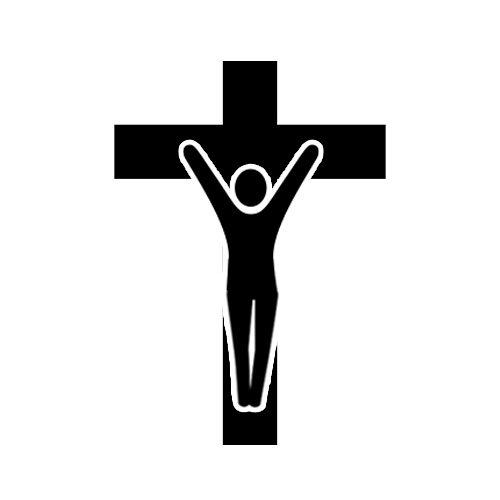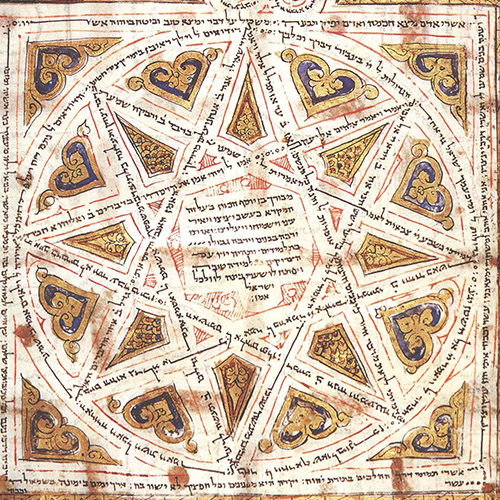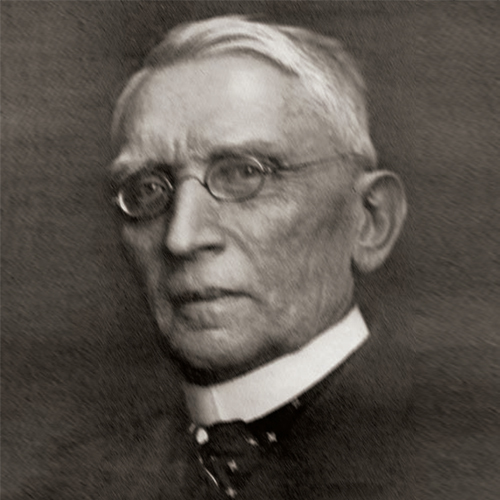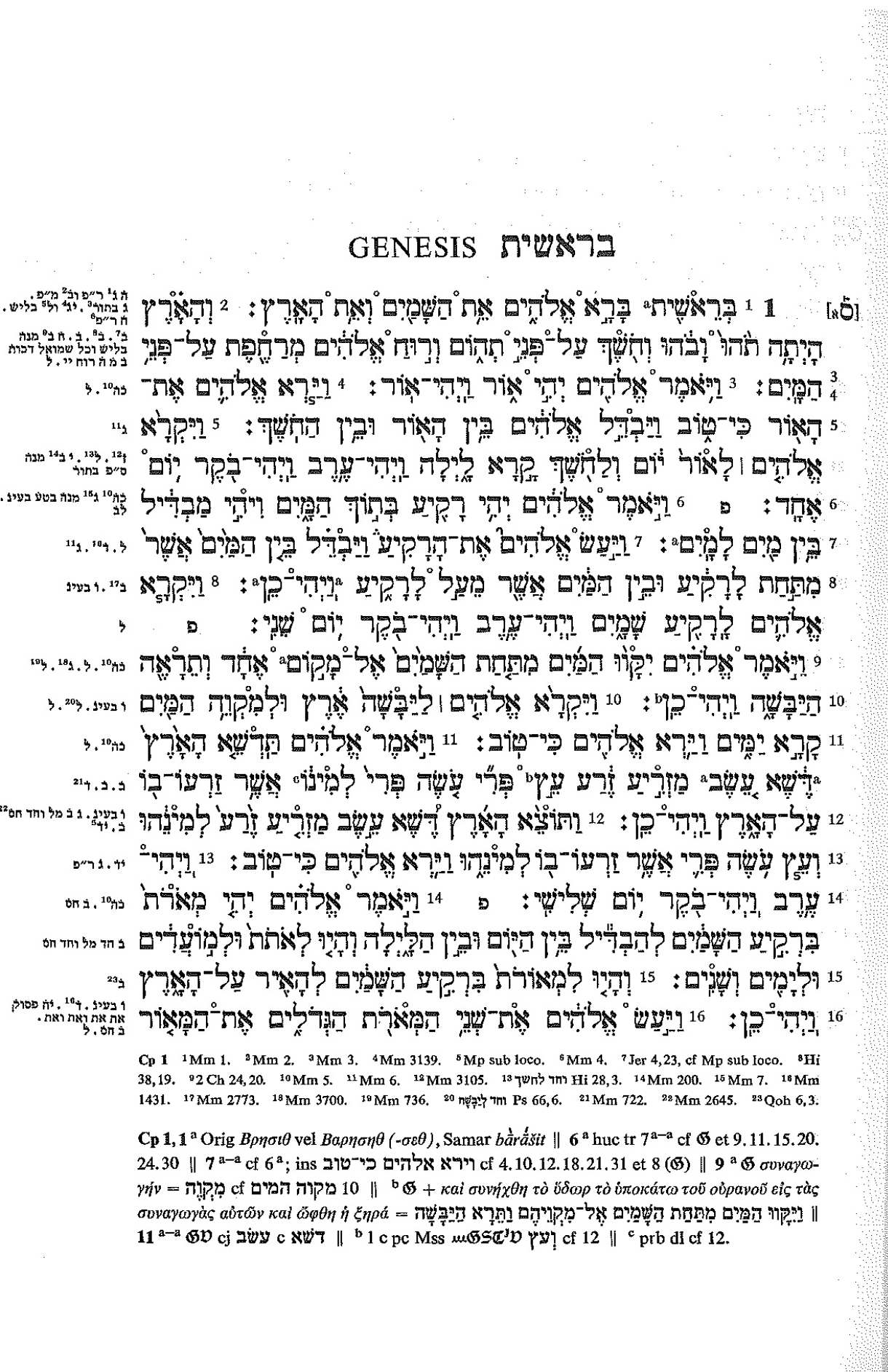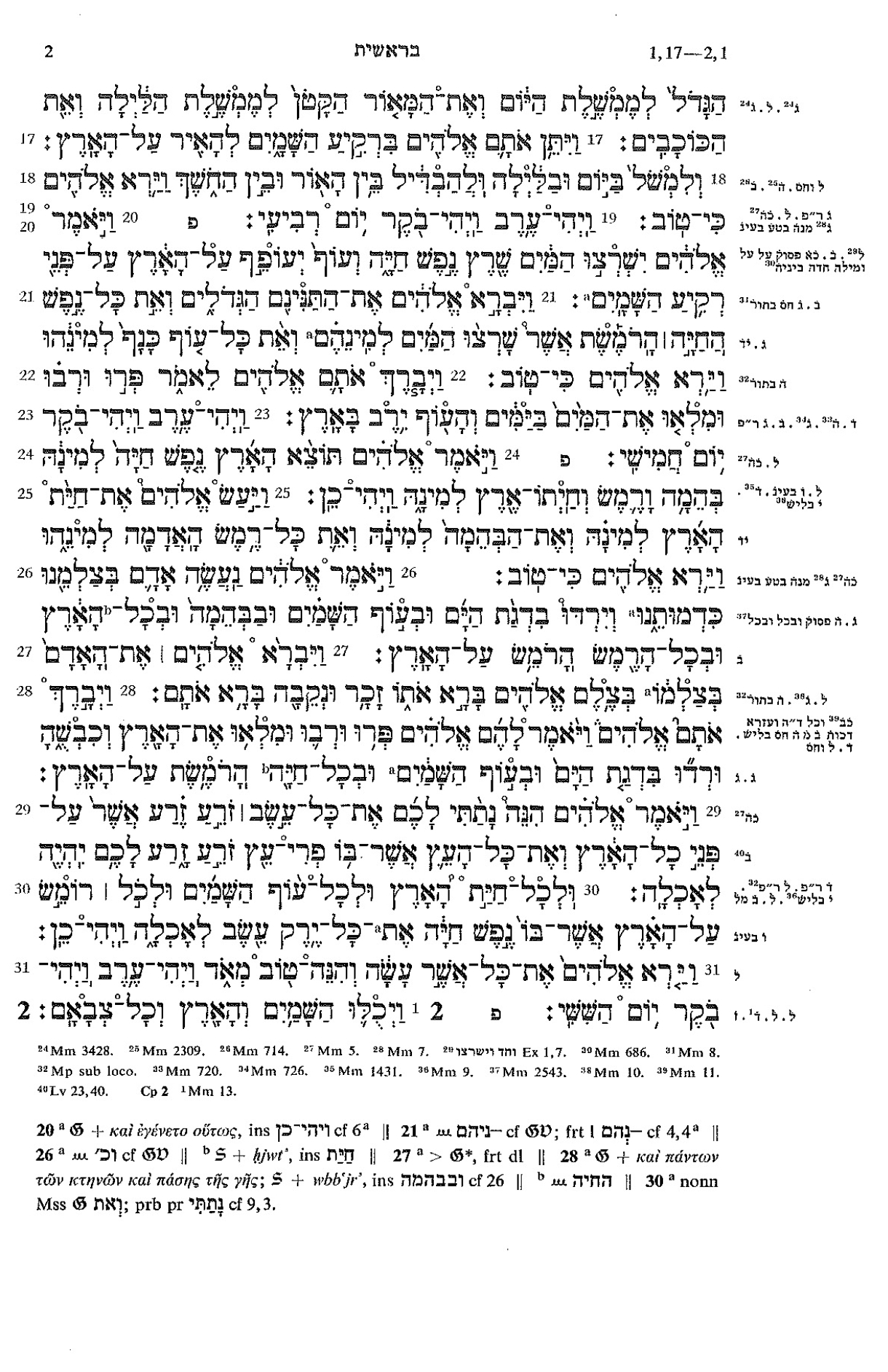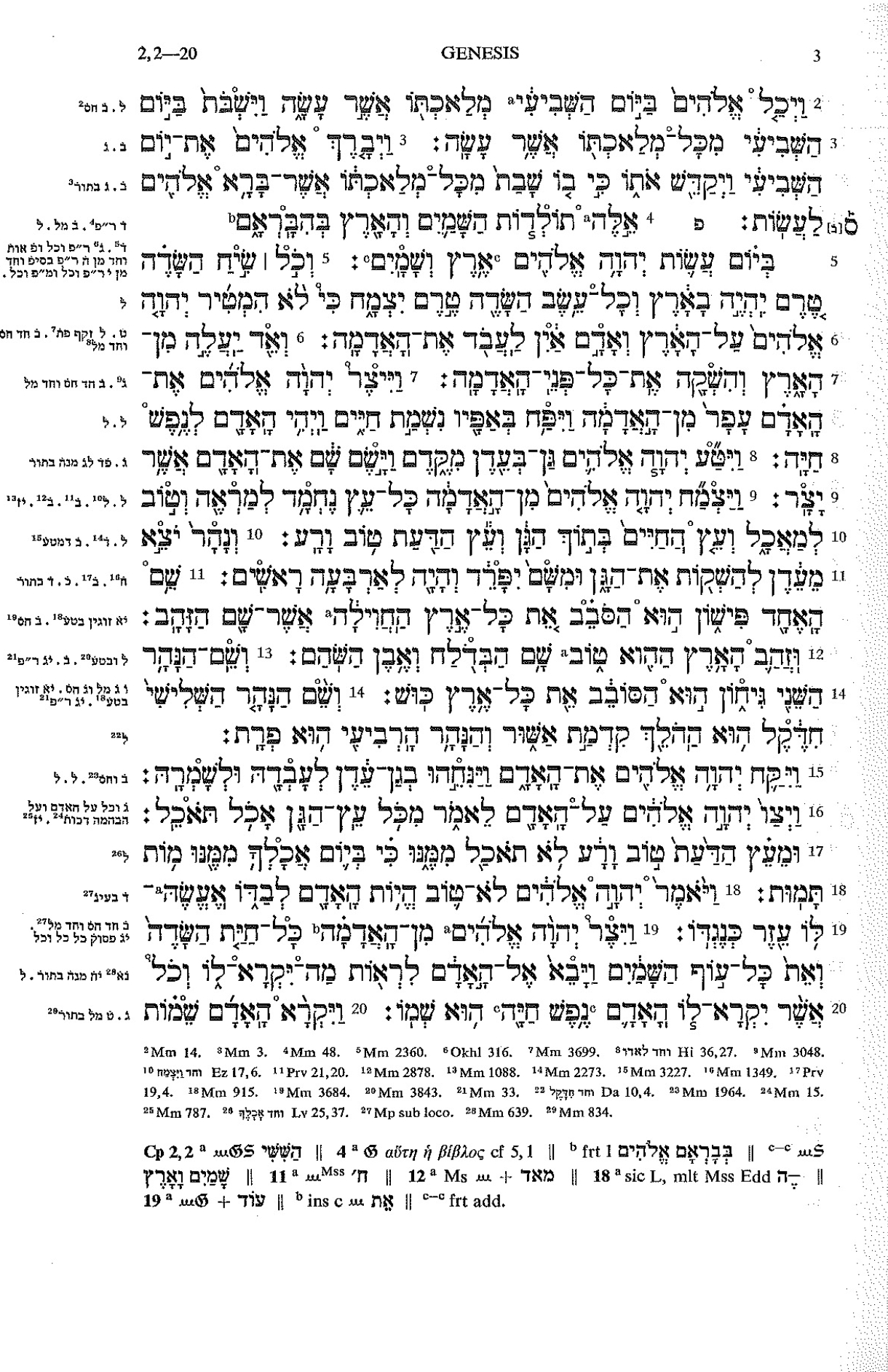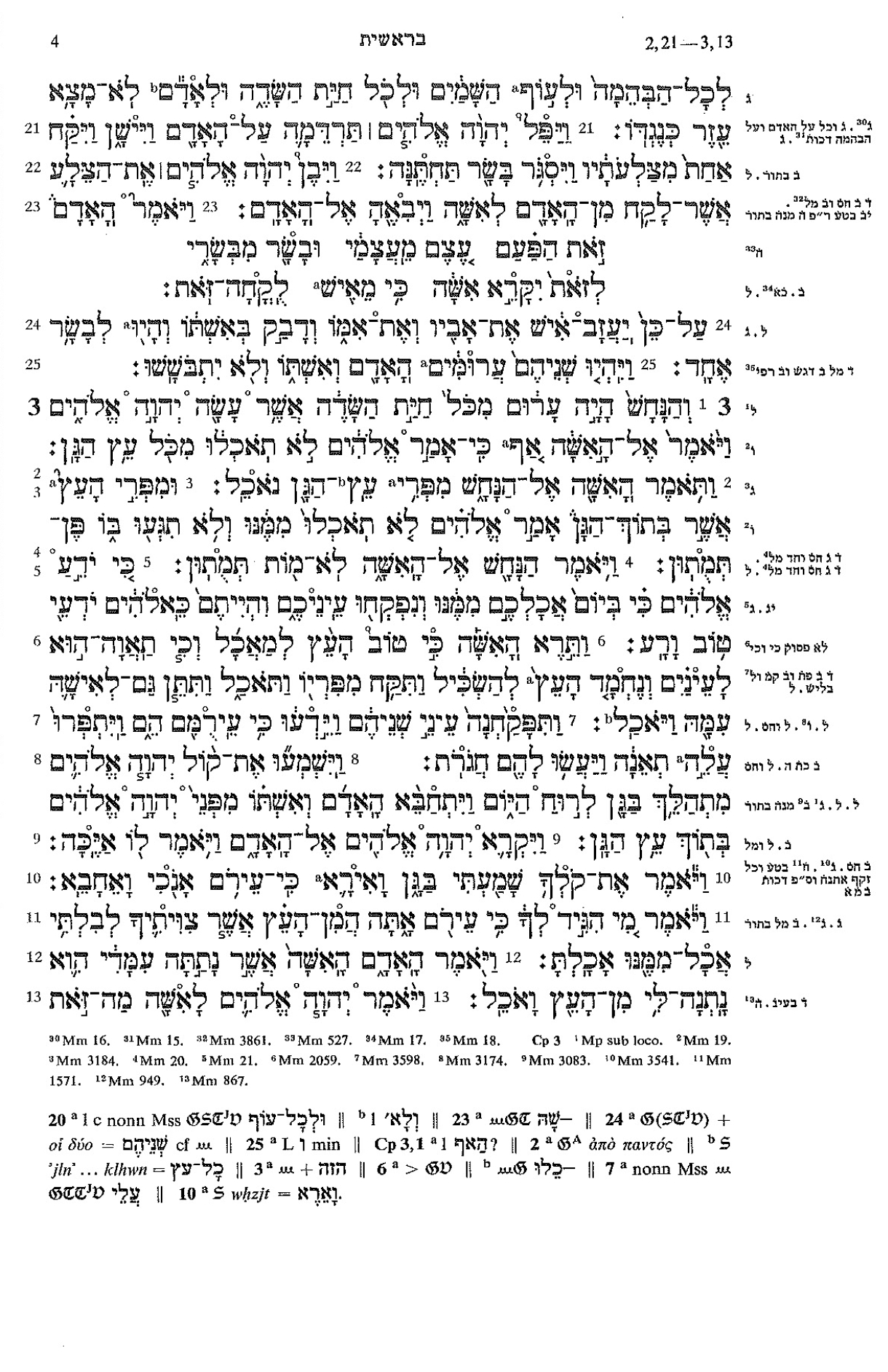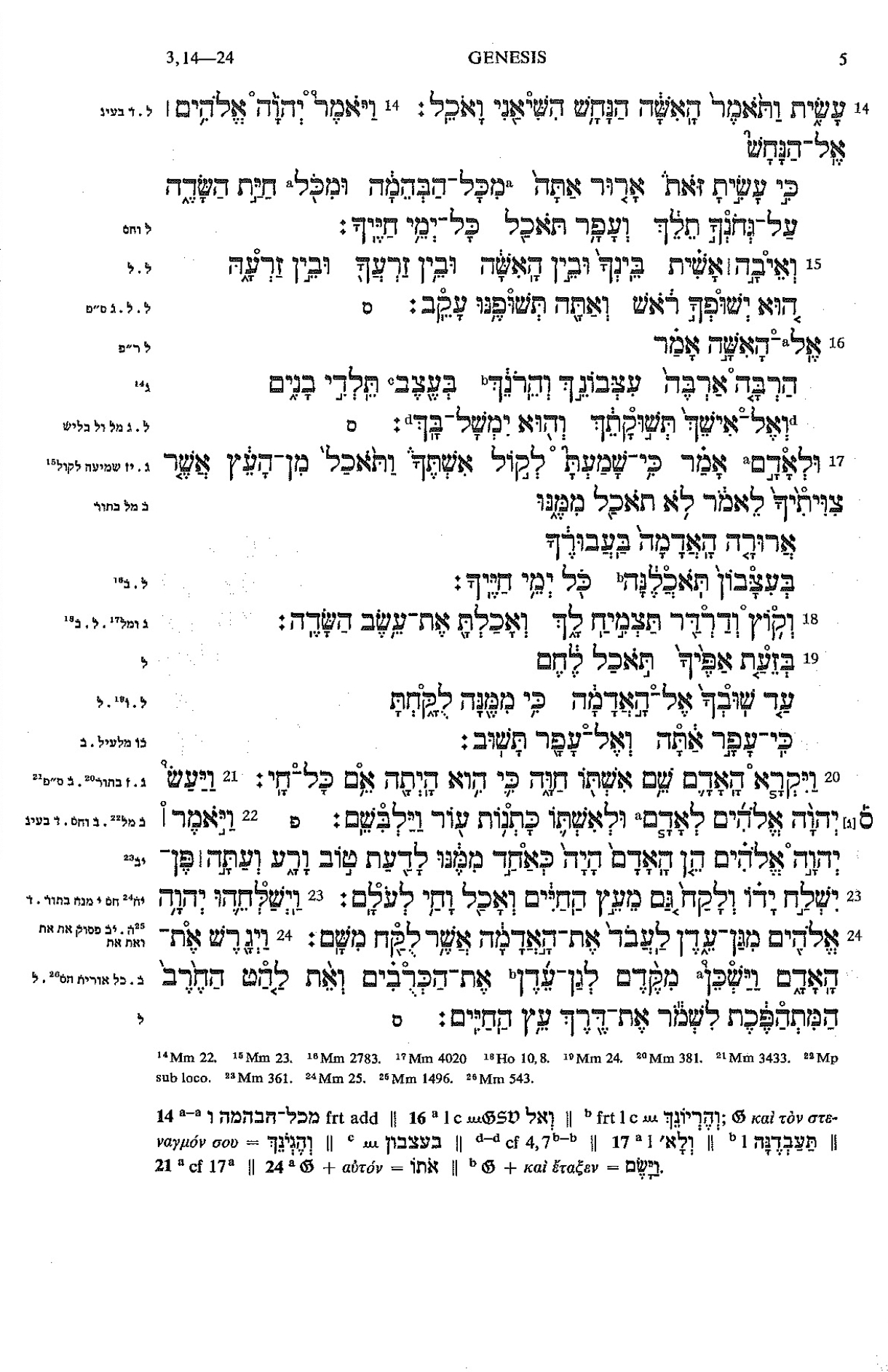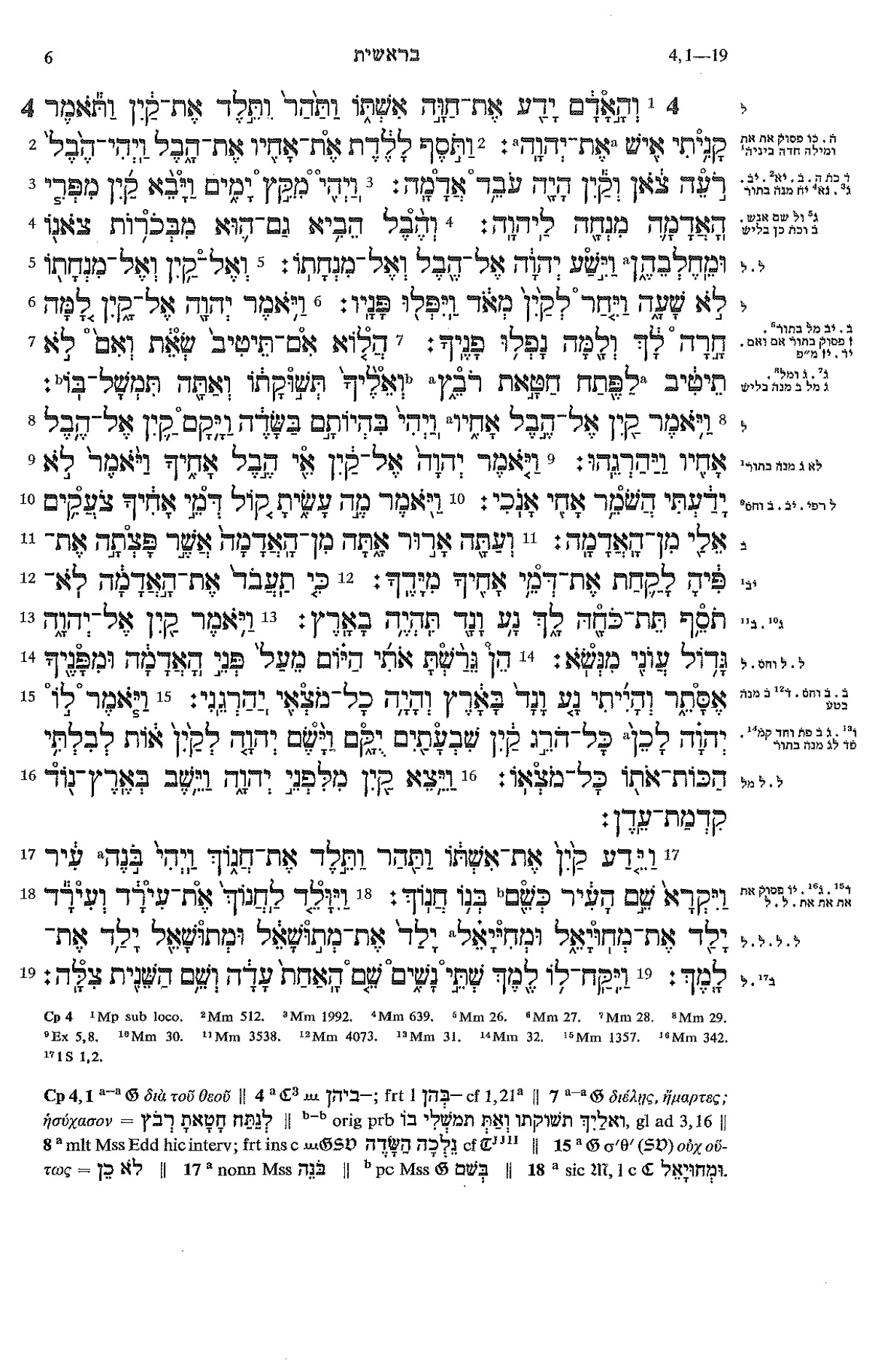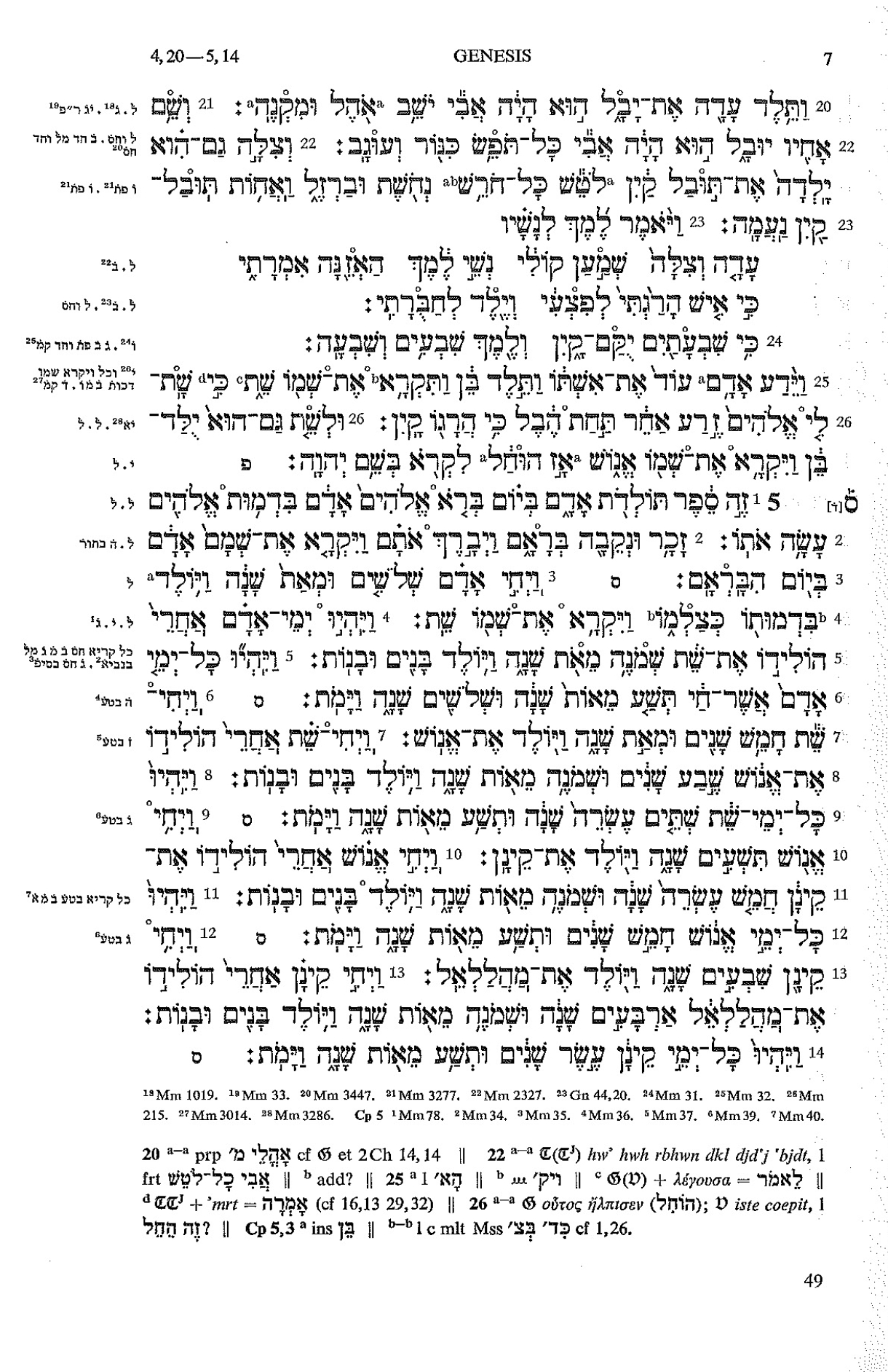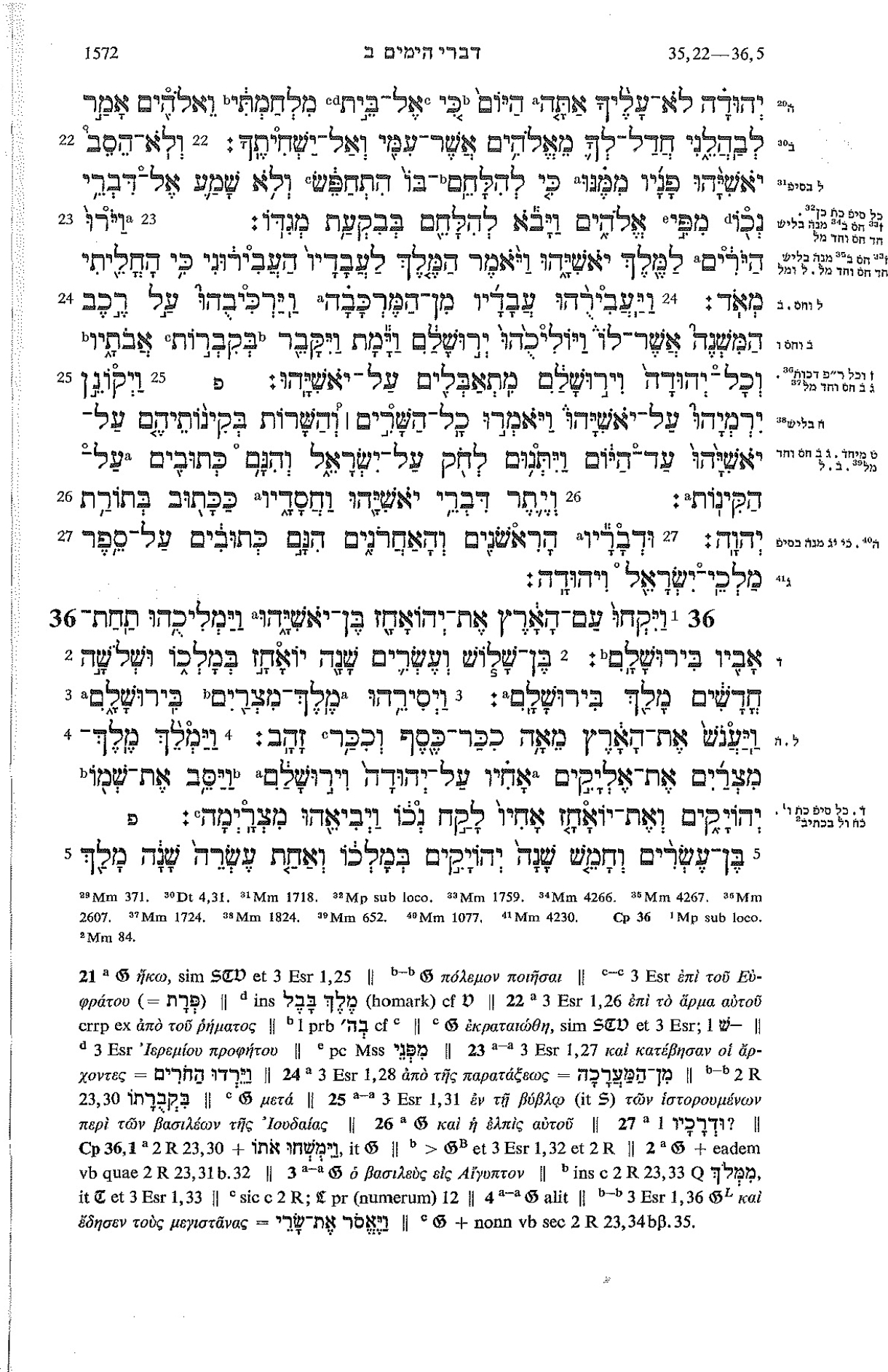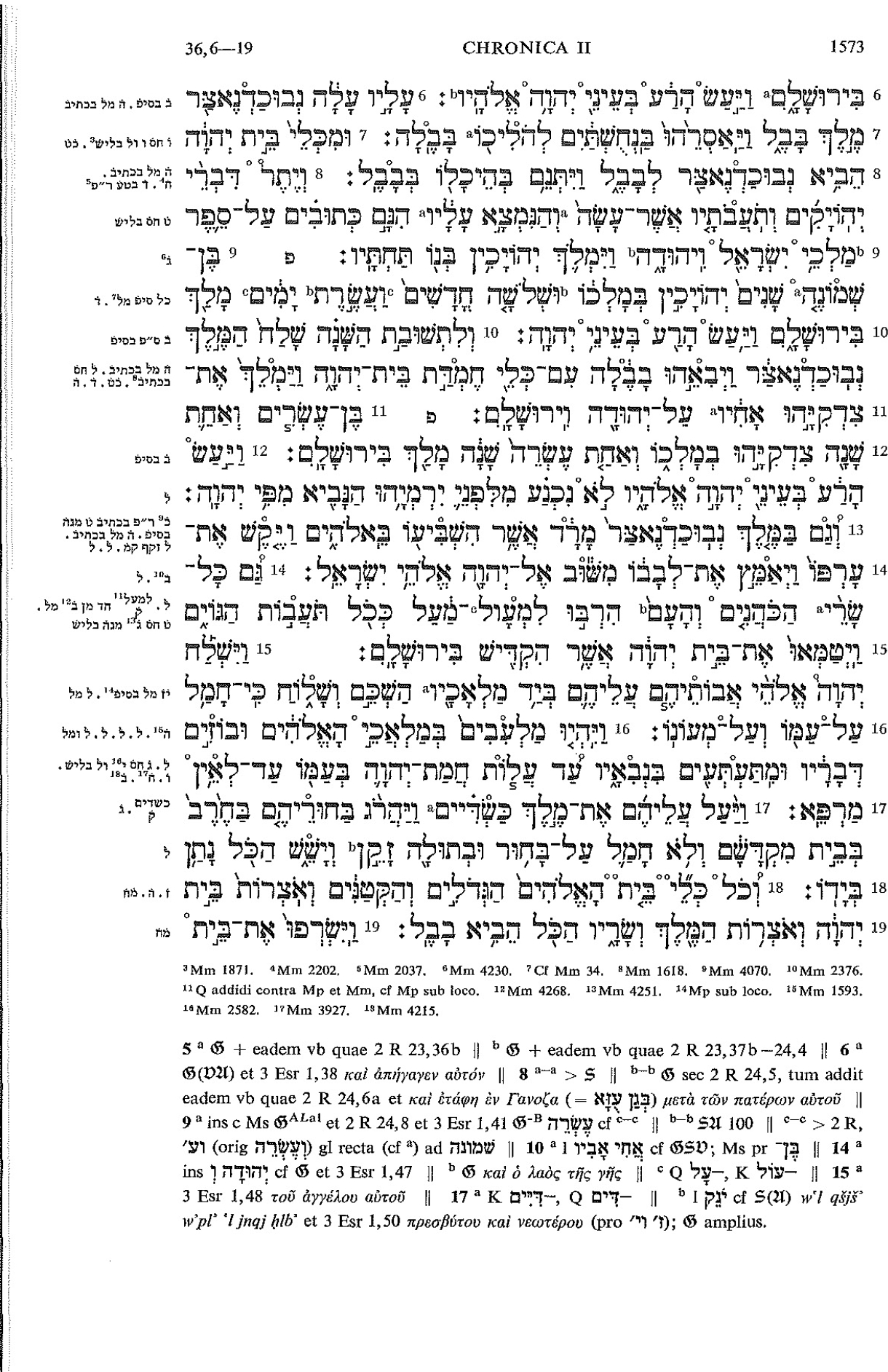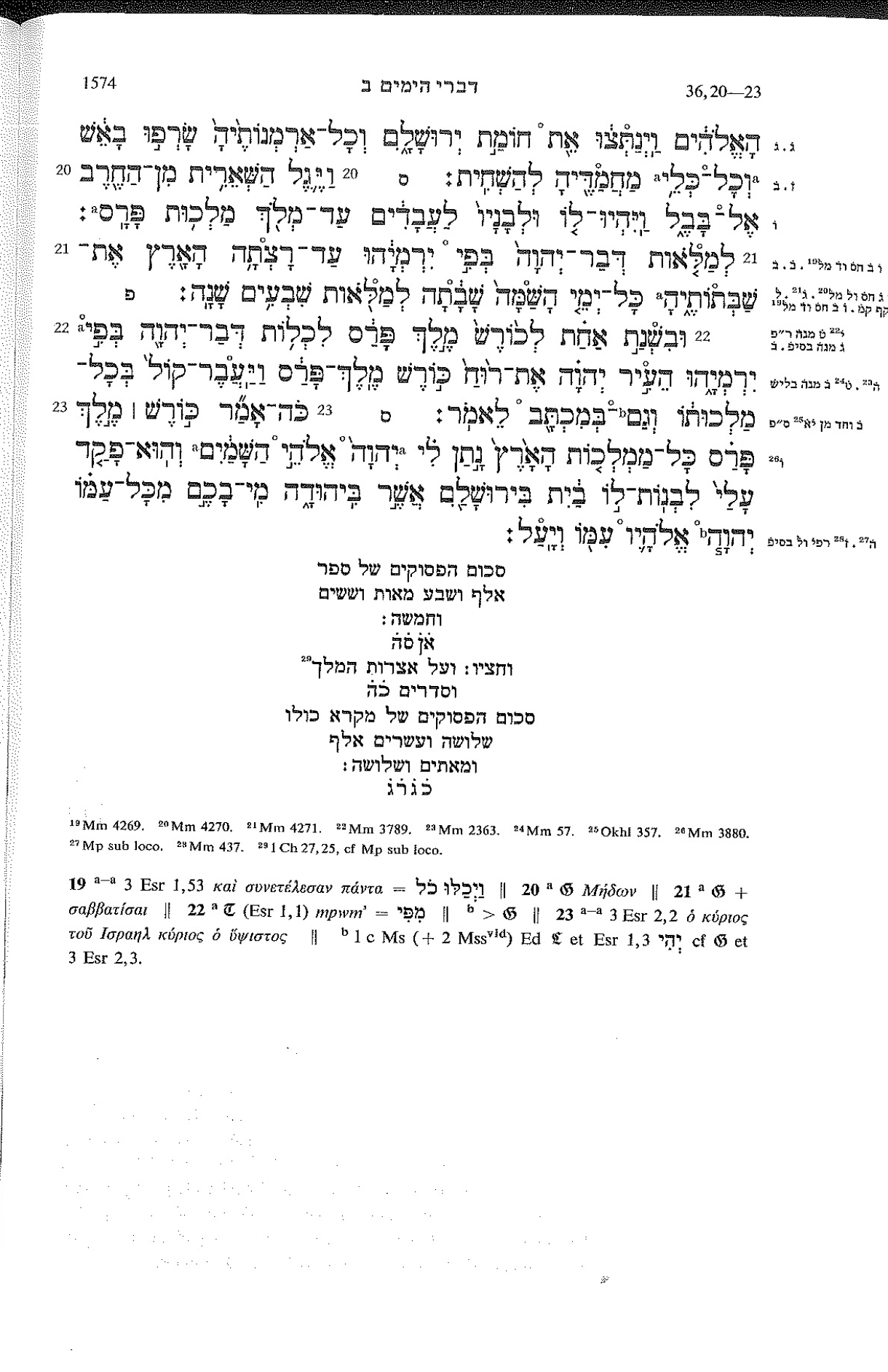About
Biblia Hebraica Stuttgartensia is a 1969 publication of the Old Testament of the Holy Bible and was edited by Karl Elliger, Wilhelm Rudolph, and Otto Eißfeldt. It is the fourth edition of the Biblia Hebraica series and published by Deutsche Bibelgesellschaft (Germany). This version uses the Leningrad Codex as a primary source and translates text from Hebrew and Aramaic. It is over 1,500 pages long and includes extensive footnotes.
Source: OMNIKA
Biblia Hebraica Stuttgartensia (BHS) is known to be the definitive edition of the Hebrew Bible. It is widely regarded as a reliable edition of the Hebrew and Aramaic scriptures and is the most widely used original-language edition among scholars. It is a revision of the third edition of the Biblia Hebraica edited by Rudolf Kittel, the first Bible to be based on the Leningrad Codex. The Leningrad Codex is the oldest complete Hebrew Bible still preserved. It originally appeared in installments, from 1968 to 1976, with the first one-volume edition in 1977; it has since been reprinted many times. The text is a nearly exact copy of the Masoretic Text as recorded in the Leningrad Codex. The Masoretic notes are completely revised.
Included is a foreword in German, English, French, Spanish and Latin as well as an English and German key to the Latin words, abbreviations and other symbols in the critical apparatus.
Biblia Hebraica Stuttgartensia (BHS) Standard Edition features a larger size, bigger margins, a ribbon marker, and a generally more spacious appearance, making it particularly accessible to the student engaged in intense language study. All of the unique features of the text, including margin notes and footnotes, are broadly displayed and easy on the eyes.
Source: Author or Publisher
expand_more Read more Read less
Access
Read for free
External sources
- Sorry, we can't seem to find this resource online.
Primary
Myth
God created everything in the course of six days, as follows: (day 1) the heavens and the earth—effectively the entire universe—followed by day and night; (day 2) a dome to separate heaven and earth; (day 3) land, from which trees and plant life is raised; (day 4) sun and moon; (day 5) creatures that dwell in the ocean, and; (day 6) animals and humans (Adam and Eve), modeled in his image. Afterwards, Adam and Eve ate the forbidden fruit from the tree of knowledge of good and evil. Upon eating the apple and gaining awareness, they were kicked out of the Garden of Eden and forced to live out their mortal days on Earth.
Belief system

Judaism is one of the world's oldest religions and was the basis for Christianity, via the Old Testament (portion of the Bible). It is widely associated with the modern nation state of Israel and is...
Deity

Yahweh is the sole supreme deity of the Jewish faith. He was originally the state deity of the Kingdom of Israel.
Translation
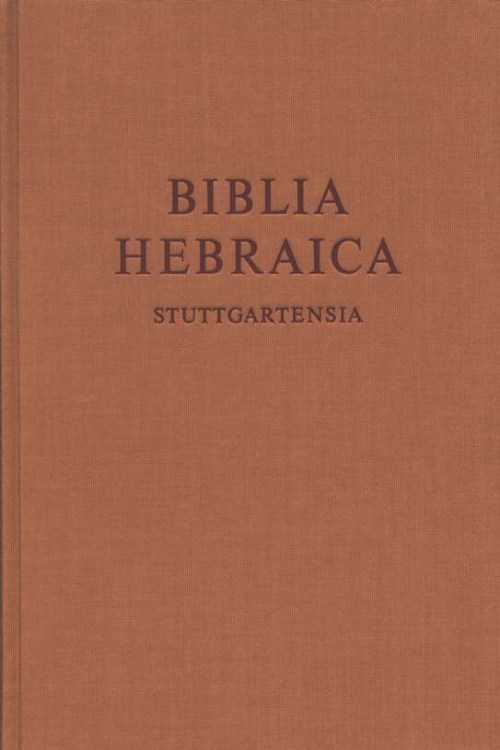
"'Genesis 1-3': Ancient Hebrew Transcript of Biblical Genesis (BHS)" is a transcript of the first three Book of Genesis. It is in Hebrew and contains 80 lines in total. The original source is a book named Biblia Hebraica Stuttgartensia (BHS), which is based on an artifact named the Leningrad Codex. The work was created by Karl Elliger and others. The first three chapters of Genesis detail a creation myth from the Christian, Jewish, and, perhaps, Islamic belief systems.
Myths cited
It looks like only the main myth was referenced in this work.
Belief systems cited
Artifacts cited
Contributor
Cite this work
ChicagoKittel, Rudolf. Biblia Hebraica Stuttgartensia: Standard Edition. 4th ed. Edited by Karl Elliger, Wilhelm Rudolph, and Otto Eißfeldt. Stuttgart, Germany: Deutsche Bibelgesellschaft, 1969.
